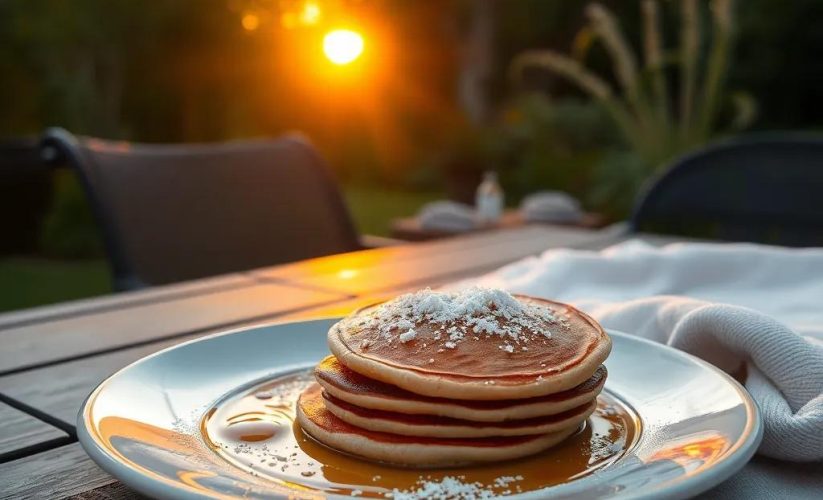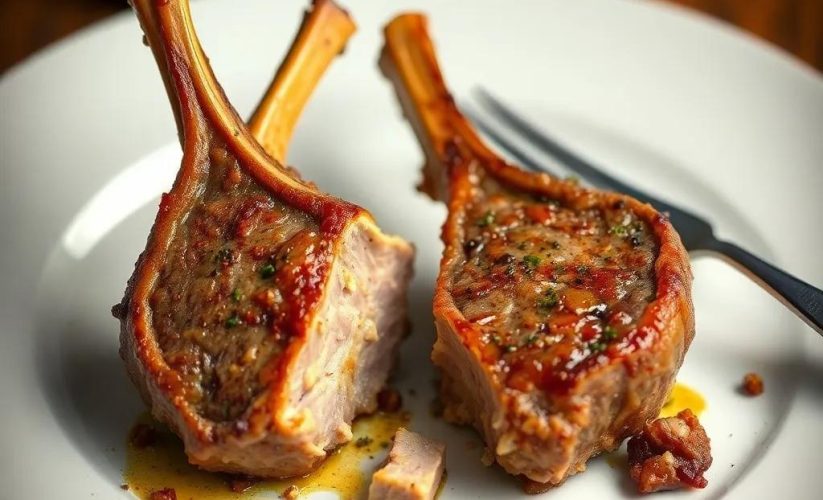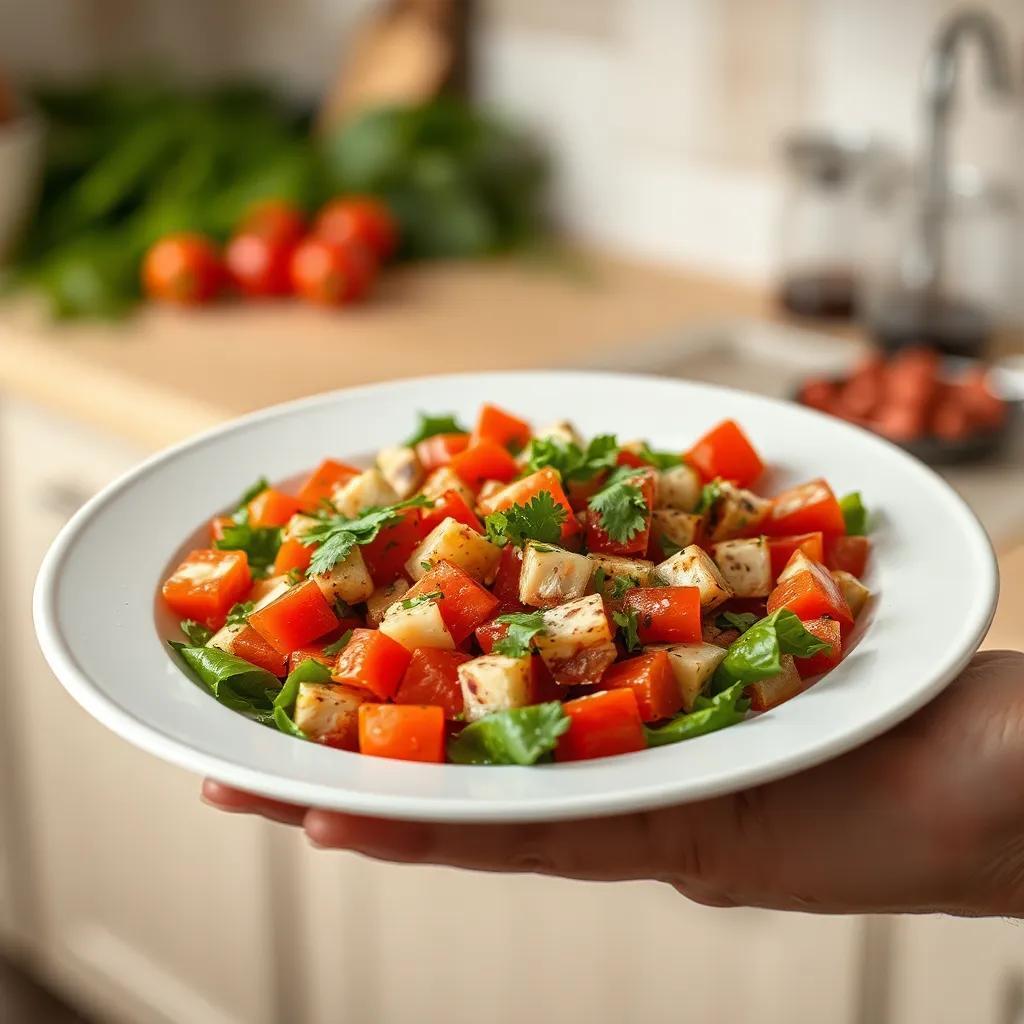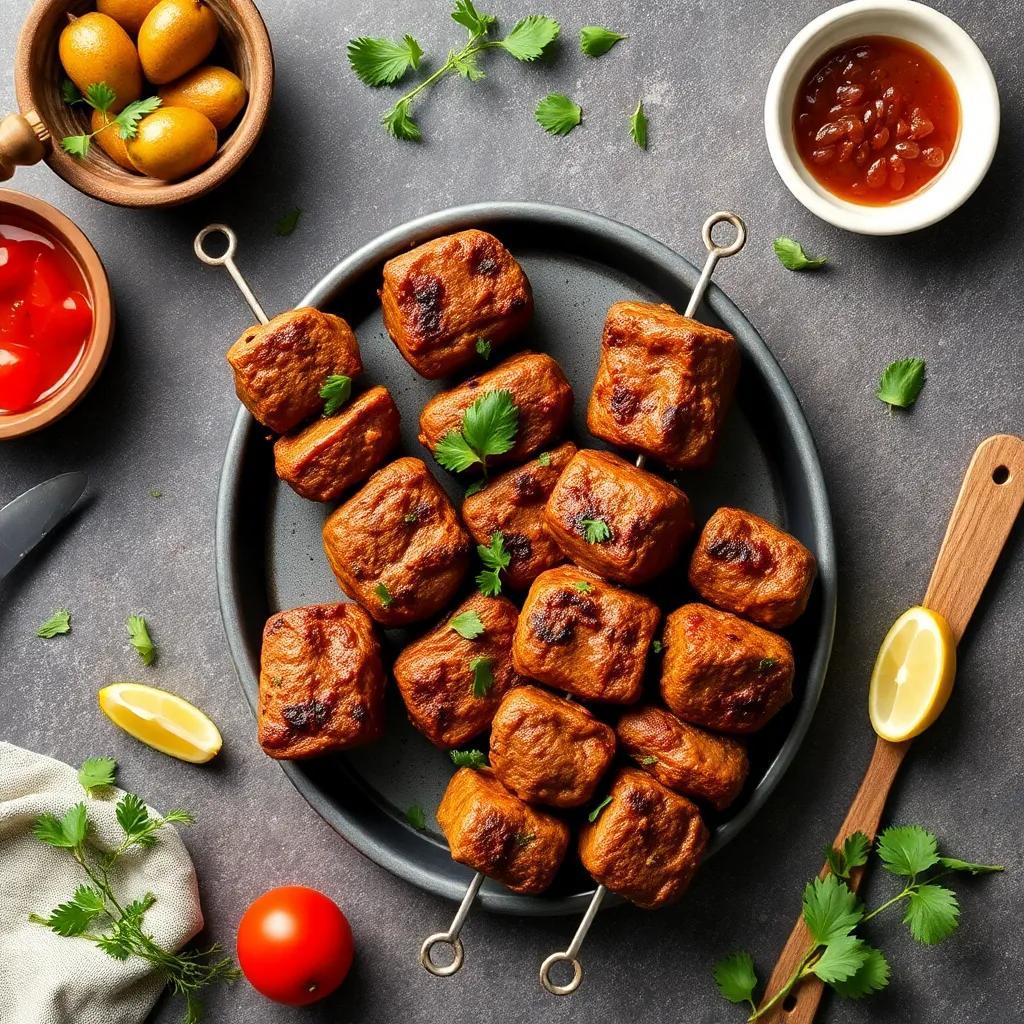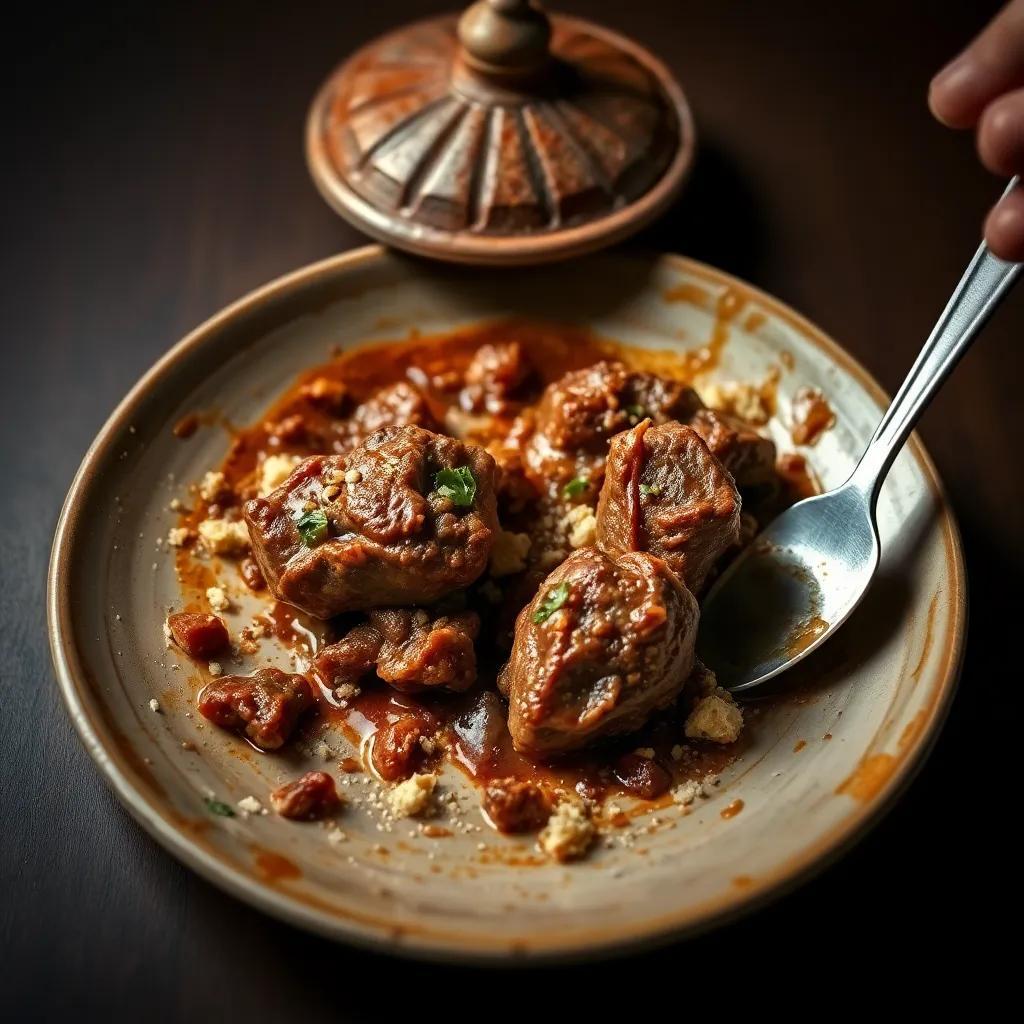Manakeesh Magic: Easy, Authentic Middle Eastern Flatbread Recipe
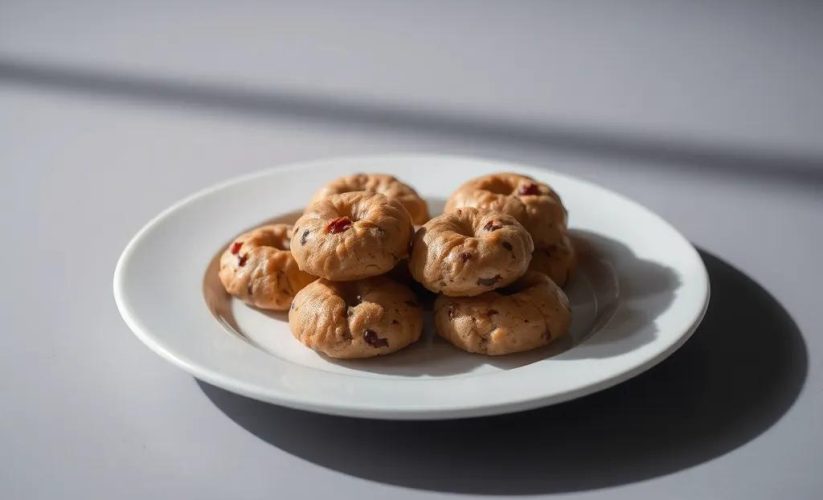
Manakeesh Magic: Easy, Authentic Middle Eastern Flatbread Recipe
🌍 Cuisine: Middle Eastern
⚙️ Difficulty: Easy
Ingredients
Nutrition Facts
210
Instructions
- In a large mixing bowl, combine the all-purpose flour, instant yeast, sugar, and salt.
- Gradually add warm water and 2 tablespoons of olive oil to the dry ingredients while mixing, until a soft dough forms.
- Knead the dough on a floured surface for about 5–7 minutes until smooth and elastic.
- Place the dough in a lightly oiled bowl, cover with a clean cloth or plastic wrap, and let it rest for 1 hour or until it doubles in size.
- Preheat your oven to 450°F (230°C) and line a baking sheet with parchment paper.
- Divide the dough into 6 equal portions and roll each into a ball.
- On a lightly floured surface, roll each ball into a thin round flatbread approximately 6–8 inches in diameter.
- Mix the za’atar spice blend with 1/4 cup olive oil in a small bowl to create the topping mixture.
- Transfer each rolled flatbread to the prepared baking sheet.
- Using your fingers, gently press shallow indentations all over the surface of each flatbread to help hold the topping.
- Brush each flatbread generously with the za’atar and olive oil mixture, ensuring even coverage.
- Optionally, sprinkle sesame seeds on top for extra texture and flavor.
- Bake in the preheated oven for 7–10 minutes or until the edges turn golden brown and the bread is cooked through.
- Remove from oven and let cool slightly before serving warm.
- Enjoy your authentic Manakeesh flatbread fresh, or store leftovers in an airtight container for up to 2 days.
Serving Suggestions
- Serve warm with labneh (strained yogurt) and fresh vegetables like cucumbers and tomatoes.
- Pair with a side of olives and feta cheese for a traditional breakfast spread.
- Top with fresh za’atar and olive oil just before serving for extra aroma and flavor.
- Use as a base for wraps filled with grilled meats or falafel.
- Enjoy alongside a cup of strong Arabic coffee or mint tea.
- Cut into small pieces as a snack or appetizer with dips such as hummus or baba ganoush.
- Try variations by adding cheese or ground lamb topping before baking.
Table of Contents
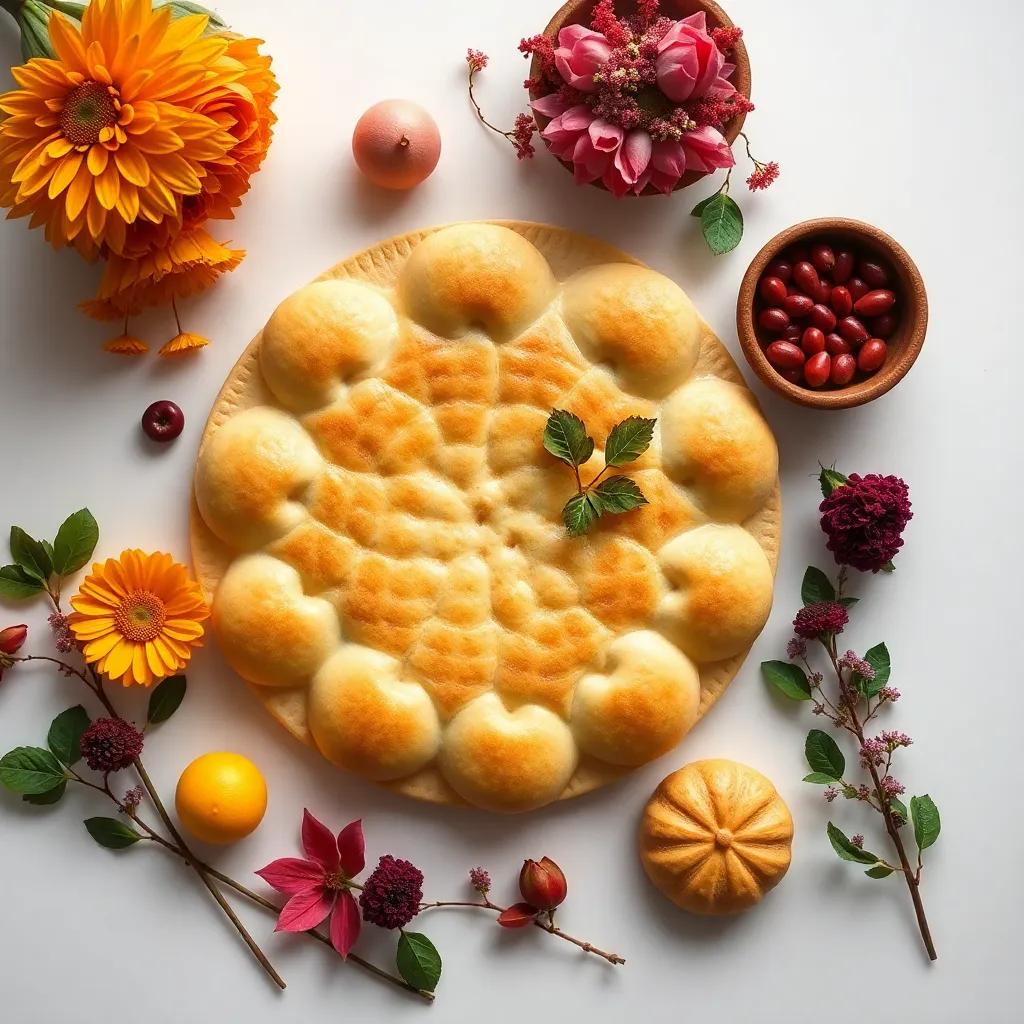
Intro
There’s something truly enchanting about Manakeesh—this beloved Middle Eastern flatbread that effortlessly combines simplicity with bold, aromatic flavors. Whether you’re enjoying it as a comforting breakfast or a satisfying snack, Manakeesh offers a perfect balance of soft, warm bread and the vibrant zing of za’atar, making each bite a delightful experience. Its magic lies not only in the taste but also in how approachable it is to make at home, even if you’re new to baking.
This recipe invites you to bring a little slice of the Middle East into your kitchen with ease and authenticity. It’s perfect for busy mornings when you want something nourishing but not complicated, or for leisurely weekends when you can gather friends and family to share warm, fragrant flatbreads fresh from the oven. Beyond traditional breakfasts, Manakeesh also shines as an appetizer or accompaniment to an array of dishes, offering versatility that will inspire your culinary creativity.
Embrace this culinary tradition with confidence—no fancy equipment or hard-to-find ingredients required. Just a handful of simple staples come together to create a textured, golden flatbread topped with a luscious blend of olive oil and za’atar that’s both grounding and uplifting. Preparing Manakeesh at home is not just about making bread; it’s an invitation to slow down, savor the process, and celebrate something timeless and delicious.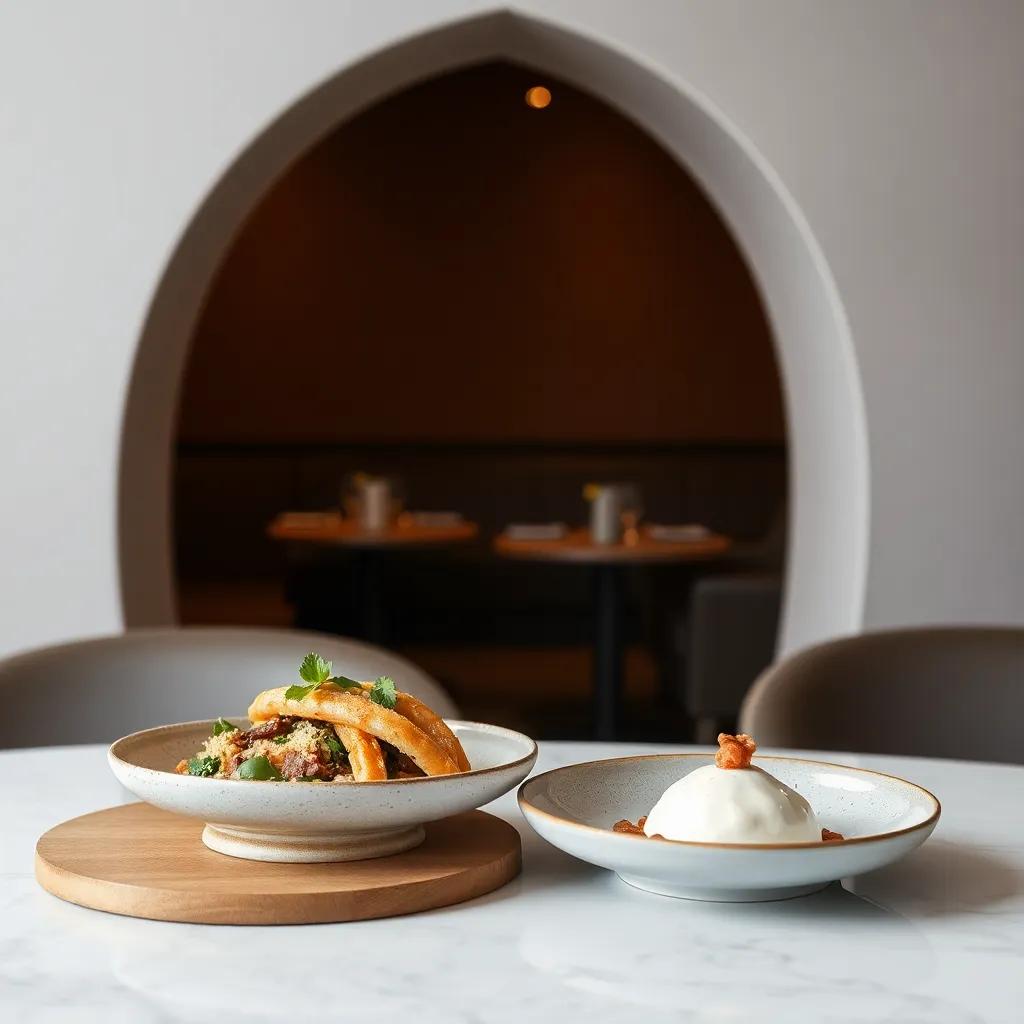
Ingredient Notes
When it comes to crafting authentic Manakeesh, a few key ingredients truly elevate this humble flatbread into a flavorful Middle Eastern classic. Understanding these staples helps you appreciate their role and make informed choices while shopping or substituting.
Za’atar Spice Blend
Za’atar is the heart and soul of Manakeesh’s signature flavor—a fragrant mix of dried thyme, sumac, sesame seeds, and often oregano or marjoram. Its tangy, earthy, and slightly nutty profile adds vibrant complexity to the bread. When selecting za’atar, look for blends that include sumac for that bright, lemony note and fresh toasted sesame seeds for crunch. If you can find regional or artisanal za’atar blends, try them out—they can vary in intensity and freshness, impacting your topping’s depth. In a pinch, you can create a DIY za’atar by combining equal parts dried thyme and oregano, adding 1–2 teaspoons of toasted sesame seeds, and a teaspoon of sumac or lemon zest for acidity.
Olive Oil
Olive oil is more than just a binder for the za’atar on Manakeesh—it enriches the dough and enhances the final texture and mouthfeel. Use a good quality extra virgin olive oil for both mixing into the dough and brushing on top. Its fruity, peppery notes complement the herbal za’atar beautifully. When buying olive oil, freshly pressed bottles with a harvest date are preferable, as older oils may taste flat. If olive oil isn’t available, avocado oil can work as a neutral alternative in the dough, but for the topping, it’s best to stick close to the authentic flavor with olive oil.
All-Purpose Flour
The base of your Manakeesh dough is simple—plain all-purpose flour. Its moderate protein content strikes a balance that yields a tender yet structured flatbread. For a softer crumb, you can experiment by swapping half the all-purpose flour for bread flour, which packs more gluten, creating a chewier texture. Conversely, for a lighter crust, a blend with pastry flour or even a small amount of semolina adds a delicate snap. When measuring flour, spoon it lightly into your cup and level it off rather than scooping directly from the bag to avoid dense dough.
Instant Yeast
Using instant yeast keeps this recipe quick and accessible—it doesn’t require proofing and can be mixed directly into the dry ingredients. Still, freshness is key; expired yeast won’t leaven properly, leading to dense bread. If fresh yeast isn’t available, rapid-rise or active dry yeast can substitute, but active dry yeast should be dissolved in warm water first to activate. The gentle rise time in this recipe promotes a tender, airy crumb without overwhelming sourness or complexity, fitting for a quick weekday baking.
By paying attention to these cornerstone ingredients, you’ll unlock the best possible balance of flavor, texture, and authenticity in your homemade Manakeesh. Whether sourcing from specialty markets or your local grocery, a little extra care in choosing the za’atar, olive oil, flour, and yeast goes a long way toward baking your way to Middle Eastern magic.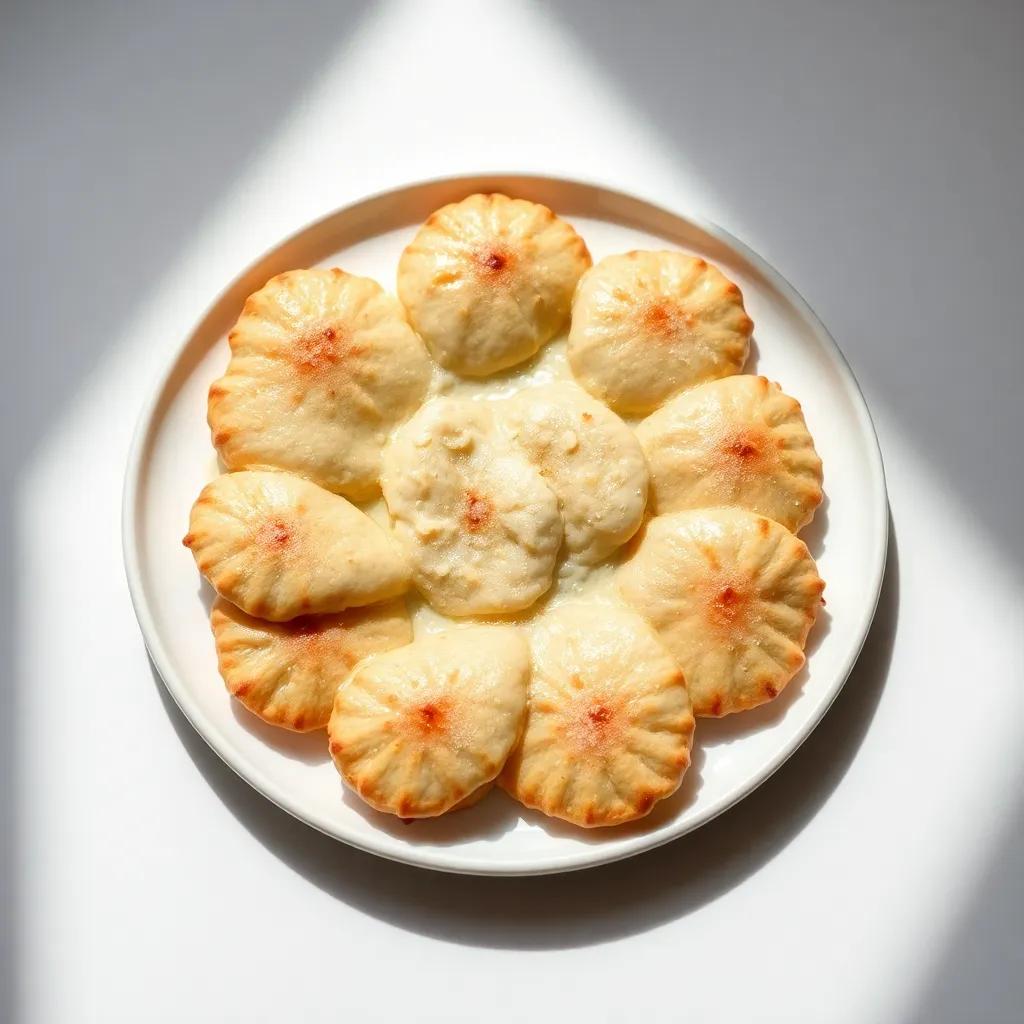
Tips & Variations
Mastering Manakeesh is all about embracing its simplicity while knowing how to tweak it to fit your tastes and lifestyle. Here are some thoughtful tips and creative variations to help you elevate your flatbread game, whether you’re a seasoned baker or just starting out.
- Perfecting the Dough Texture:
The dough should be soft but not sticky. If you find your dough too wet, add flour a tablespoon at a time; too dry, add water gradually. Kneading well for those 5–7 minutes develops gluten for that ideal chewiness. To speed up the rise on chilly days, place the dough in a slightly warm spot—like inside an oven turned off but with the light on—to encourage gentle fermentation.
- Za’atar Topping Hacks:
The ratio of za’atar to olive oil is flexible. If you prefer a bolder herb flavor, increase the spice blend slightly. For a smoother topping spread, gently warm the olive oil before mixing it with za’atar. This helps release the spices’ aroma and makes brushing easier. Want an extra nutty crunch? Toast sesame seeds lightly in a dry pan before sprinkling on top.
- Customizing Your Manakeesh:
Although za’atar with olive oil is the classic, Manakeesh is wonderfully versatile. Try these variations for different flavor profiles:
– Cheese Version: Add crumbled akkawi, feta, or mozzarella on top before baking for a gooey, savory twist.
– Meat Lovers’ Delight: Spread a thin layer of spiced ground lamb or beef mixed with pine nuts for a hearty feast.
– Spinach and Sumac: Combine sautéed spinach with a squeeze of lemon juice and a sprinkle of sumac for a bright, tangy topping.
– Sweet Manakeesh: Switch it up by brushing with honey or date syrup and sprinkling crushed pistachios for a dessert-style flatbread.
- Dietary Adjustments:
– Gluten-Free: Replace all-purpose flour with a gluten-free baking mix designed for yeast breads. Add xanthan gum if not already included to help structure, but expect a slightly different texture—more delicate and crumbly.
– Vegan Considerations: This recipe is naturally vegan, but if you add toppings like cheese, opt for plant-based alternatives such as cashew-based ricotta or almond feta.
– Lower-Sodium: Reduce added salt slightly in the dough and choose a low-sodium za’atar blend or make your own to control the salt level.
- Make-Ahead and Prep Tips:
You can prepare the dough up to the first rise stage the night before and refrigerate it overnight for more complex flavor development. Bring it back to room temperature before shaping. Also, pre-mix the za’atar and olive oil topping in a jar—shake well and keep refrigerated for up to a week, perfect for quick assembly.
- Baking Alternatives:
If you don’t have access to a high-temperature oven, consider cooking Manakeesh on a hot cast-iron skillet or grill pan over medium heat. Cook each side for a few minutes, then finish with the topping under a broiler for a minute or two to toast the za’atar blend.
By experimenting with these tips and tricks, you can tailor your Manakeesh to whatever mood or occasion strikes, all while honoring the delicious foundation of this Middle Eastern treasure. Whether sticking to tradition or pushing creative boundaries, each version promises its own slice of magic.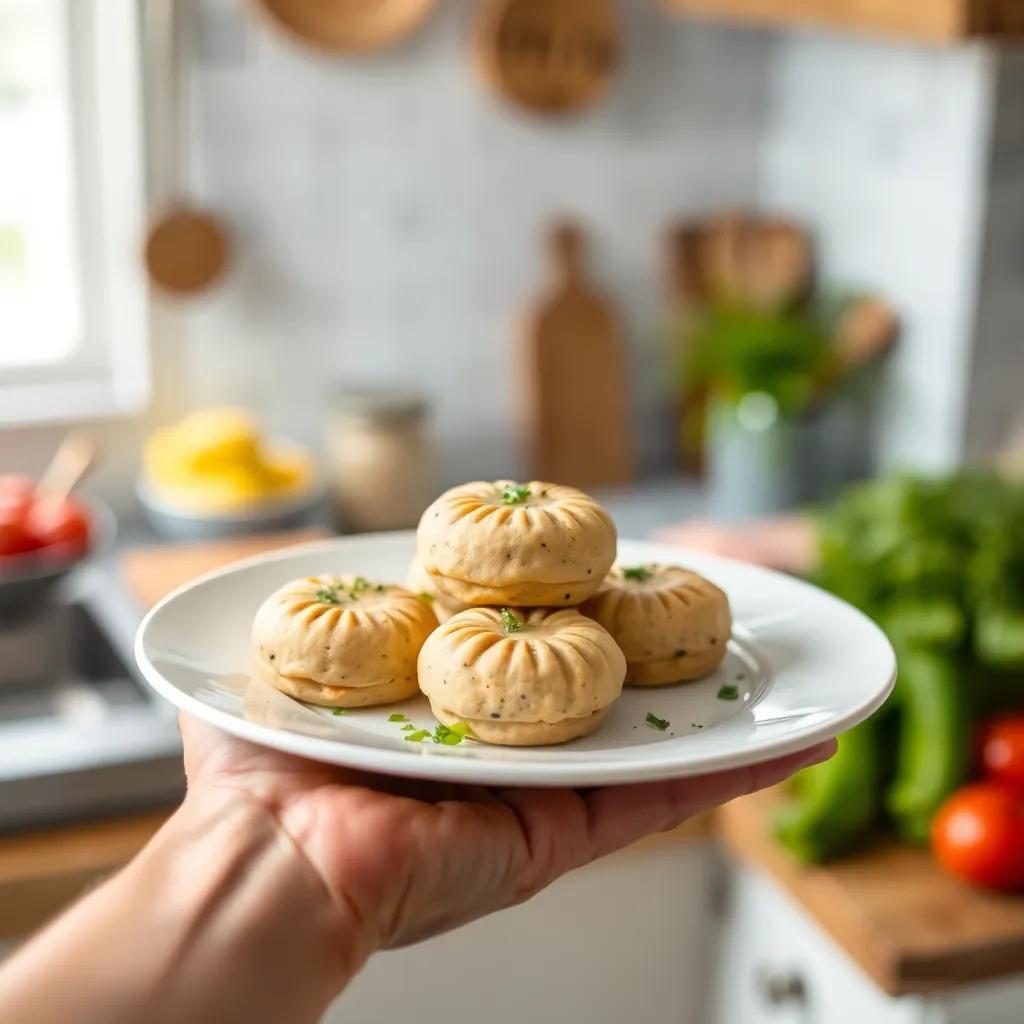
Leftovers & Storage
After savoring your fresh, fragrant Manakeesh, you might find yourself with some extra flatbreads—lucky you! Proper storage is key to preserving that delightful balance of soft dough and za’atar’s aromatic punch, so your leftovers stay just as inviting for later enjoyment.
For short-term storage, let the Manakeesh cool completely to room temperature before packing. This prevents condensation from making the bread soggy. Store the flatbreads in an airtight container or resealable plastic bag to maintain freshness. Kept in the refrigerator, they will stay good for up to 2 days. When you’re ready to enjoy them again, a quick reheat in a warm oven (about 350°F / 175°C for 5–7 minutes) or a hot skillet can revive the crisp edges and soften the interior, almost like freshly baked.
If you want to keep Manakeesh longer, freezing is a great option. Wrap each flatbread tightly in plastic wrap or aluminum foil to protect against freezer burn, then place them in a freezer-safe zip-top bag or an airtight container. Properly stored, they can last for up to 1 month in the freezer without losing flavor or texture. Thaw frozen Manakeesh at room temperature for 30–60 minutes, then warm as described above. This method ensures the za’atar topping remains flavorful and the bread retains its signature chewiness.
For meal prepping or packed lunches, Manakeesh travels well when wrapped in parchment paper and kept in a sturdy container. To avoid sogginess, add any moist accompaniments—like yogurt dips or fresh vegetables—separately and assemble just before eating. You can also pack individual flatbreads with small containers of za’atar oil for brushing if you want that freshly brushed flavor on the go.
Remember, while Manakeesh tastes best fresh, these storing tips will keep your leftovers delicious and versatile, ready for quick breakfasts, snacks, or impromptu Middle Eastern feasts any time you desire.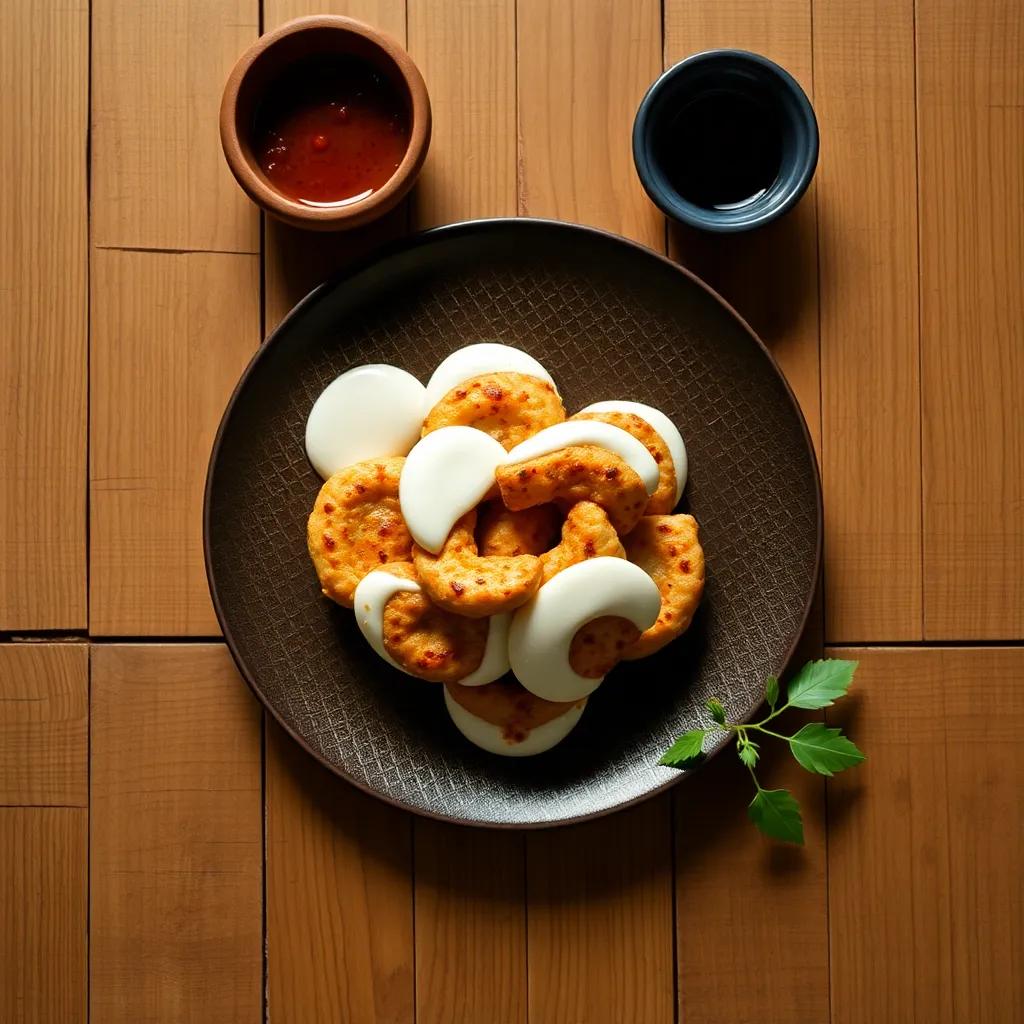
Behind the Recipe
Manakeesh is more than just a flatbread—it is a culinary tradition that has nourished and brought people together across the Middle East for centuries. Its origins trace back to ancient Levantine cultures, where simple dough was topped with local herbs and baked in stone ovens. This humble bread became a staple breakfast item and street food, loved for its fragrant aroma and comforting warmth. The za’atar topping, a blend rich with thyme, sumac, and sesame seeds, reflects a deep connection to the region’s landscape, drawing on ingredients long revered for both flavor and health.
In many Middle Eastern homes, Manakeesh is a morning ritual—dough is often prepared fresh, and the topping spread with care, symbolizing hospitality and the joy of shared meals. Vendors sell it hot from wood-fired ovens in bustling markets, filling the air with intoxicating scents that evoke memories of home and family. This recipe captures that essence, bringing the magic of a centuries-old tradition to your kitchen with accessibility and ease.
Personally, making Manakeesh has always felt like a warm invitation—one that encourages slowing down to connect through food. The simple act of pressing the dough, brushing the fragrant za’atar oil, and watching the flatbreads puff and brown in the oven is meditative, almost like stepping into a timeless moment. Whether you’re sharing it with loved ones or enjoying it quietly with a cup of tea, Manakeesh carries stories of culture, community, and comfort, making every bite a meaningful experience.
FAQ
Can I use whole wheat flour instead of all-purpose flour?
How can I store leftover Manakeesh to keep it fresh?
Are there good vegetarian toppings I can try besides za’atar?
Can I prepare the dough in advance?
What’s the best way to reheat Manakeesh without drying it out?
Is it possible to make Manakeesh gluten-free?
Can I substitute the traditional toppings with vegan cheese?
Enjoy Your Meal!
Manakeesh truly captures the heart of Middle Eastern cuisine with its simple ingredients and irresistible flavors, making it a delicious way to bring a bit of authentic magic into your kitchen. Whether you’re savoring it fresh from the oven or experimenting with your favorite toppings, this easy flatbread recipe invites you to enjoy a taste of tradition with every bite.
We’d love to hear how your Manakeesh adventure goes—feel free to leave a comment, share your rating, or tell us about your own creative twists on this classic dish. Happy baking, and may your kitchen be filled with the warm, fragrant spirit of Manakeesh!

